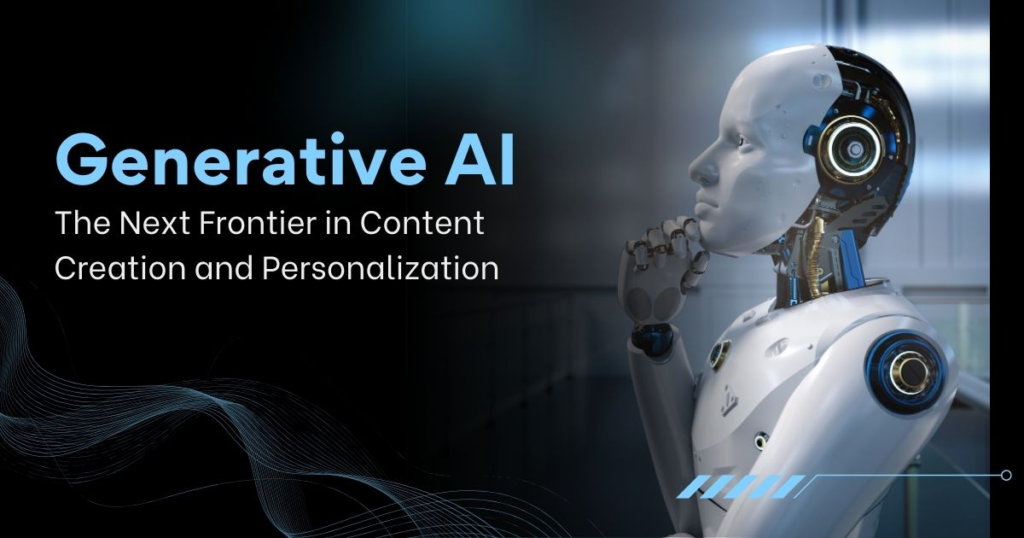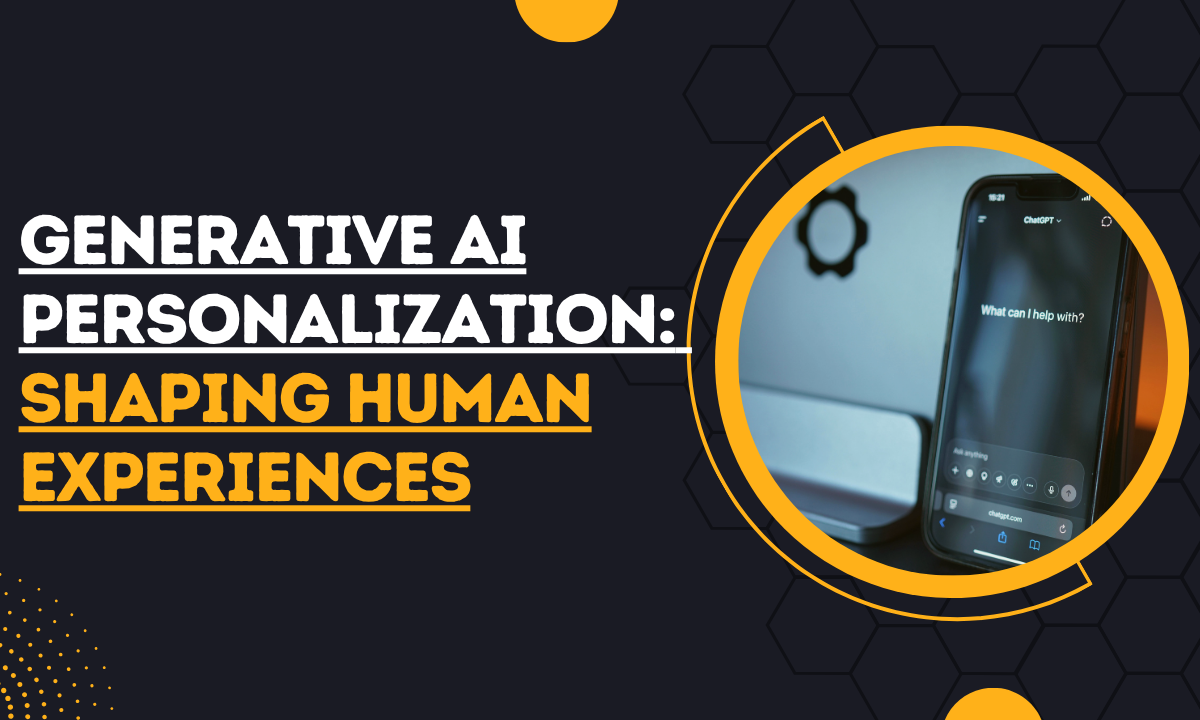Generative AI Personalization: Shaping Human Experiences
Generative AI personalization is evolving the way technology understands and responds to your individual needs..
From adaptive learning platforms to retail experiences that feel handcrafted for you, personalization has matured into something far more profound.
It’s not about convenience anymore—it’s about relevance, trust, and emotional resonance.
Let’s walk through the dimensions of this transformation.
What Is Generative AI and Personalization?
Generative AI is a technology that creates new content—like text, images, music, or designs—by learning patterns from existing data.
Unlike traditional tools that follow fixed rules, it can produce fresh, context-aware outputs that feel original and adaptive.
This helps in making interactions more natural and engaging for everyday users.

Source: Urrankings
Personalization is the process of tailoring experiences to match an individual’s preferences, behavior, or needs.
It transforms generic services into meaningful ones.
This could be anything like recommending products from shopping sites you actually wan. Or it could be learning an app adjusting lessons to your pace—turning every interaction into something relevant and human-centered.
From Generic to Hyper-Personalized
In earlier years, personalization was limited to surface-level tweaks: “people who bought this also bought that.”
Generative AI personalization moves far beyond that.
It recognizes your unique context—your current location, emotional tone, browsing history, and even the way you phrase a question.
This makes personalization dynamic, constantly evolving as your preferences and circumstances change.
The result?
You don’t just get suggestions—you get anticipatory guidance.
Your music app knows what you want to hear before you open it.
Your news feed balances productivity with leisure, understanding your work cycle.
These aren’t coincidences; they’re carefully tuned models making every interaction sharper and more satisfying.
Healthcare in a Personal Lens

Source: Analytics Insights
Healthcare has always demanded a human touch.
Generative AI personalization enhances that by personalizing medical pathways to each patient.
Instead of generic plans, AI can craft recovery routines considering diet, genetics, mood, and lifestyle habits.
For example, two patients with the same knee injury may receive radically different rehabilitation programs.
What’s more, emotional AI is stepping in.
By analyzing voice tone during virtual check-ins, systems adjust advice in real time.
This kind of personalization bridges the gap between standardized care and nuanced healing.
The outcome isn’t just better treatment—it’s a sense of being truly understood.
Education Reimagined
No two students learn alike.
That’s why generative AI personalization is transforming education by offering individualized pathways.
Adaptive platforms now monitor comprehension, attention span, and preferred learning styles.
A visual learner sees diagrams; an analytical thinker sees case studies.

Source: Webclues
Here is a use case example of the role played by generative AI personalization in education:
In a Newark school, a teacher asks her third graders to solve a fraction problem using the word “MATHEMATICIAN.” When the term “consonant” confuses them, she pauses the lesson and directs students to Khanmigo, an AI tutoring bot. The children type their questions, and Khanmigo explains: vowels are A, E, I, O, U; consonants are the rest. Armed with this clarity, the students return to the problem with greater confidence and understanding.
The fact is that with AI teachers, once bound by one-size-fits-all methods, now act more as guides while AI handles the customization.
This does not replace human mentoring; instead, it augments it.
By freeing educators from repetitive adjustments, it allows them to focus on motivation, discipline, and creativity.
For learners, the process becomes less about catching up and more about moving forward at their natural pace.
Personalized Shopping Journeys
E-commerce has been at the forefront of personalization for years, but now it’s reaching new levels.
Imagine opening an online clothing store, and the entire homepage reorganizes itself based on your climate, body type, and past choices.
This isn’t a futuristic dream—it’s the reality of generative AI personalization.
The difference lies in adaptability.
Instead of recommending based on similar users, systems analyze you as an individual.
Retailers no longer simply push products; they create evolving storefronts unique to each session.
The result is higher satisfaction, reduced return rates, and deeper loyalty.
Privacy and Consent Dilemmas
Here’s the catch—personalization needs data.
And the more detailed the personalization, the more invasive the data gathering can feel.
Generative AI personalization faces a dilemma: how to balance seamless experiences with user control.
This year, platforms are experimenting with clearer consent dashboards.
Users can decide what categories of data to share and revoke access anytime.
Trust is now the currency of personalization. Without it, even the most advanced systems risk being abandoned.
Transparency isn’t optional—it’s the foundation of the entire ecosystem.
Emotional Intelligence in AI
Another leap has come in the form of emotional intelligence.
Generative AI personalization doesn’t just analyze clicks or swipes; it can detect stress, excitement, or fatigue.
This allows systems to alter recommendations—slower-paced playlists after a tough day, or energizing workouts on mornings you seem sluggish.
It’s subtle but powerful.
Instead of treating you as a user profile, personalization now sees you as a dynamic being.
This moves personalization from transactional utility to relational empathy.
In mental healthcare, personalized generative AI can provide more responsive support.
It adapts suggestions or exercises to your emotional state, helping you manage stress, mood, or anxiety more effectively.”
Possibilities Ahead
Personalization That Grows With You
Generative AI personalization evolves as you interact with it.
Every choice you make helps the system learn and adapt. Over time, it begins predicting your preferences, tailoring content and services to your unique context.
Lessons, recommendations, or product suggestions feel almost intuitive.
The experience shifts from mechanical to personal.
In the coming years, personalization won’t just respond—it will anticipate, making interactions smarter and more seamless in daily life.
A Future of Fluid, Adaptive Experiences
Generative AI can adjust to changes in your habits, goals, or environment in real time.
What feels relevant today may shift tomorrow, and the AI will adapt automatically.
This creates flexible, adaptive experiences, responsive to both small and major life changes.
Your interactions will feel more organic, less engineered.
Companies and individuals will need to balance innovation with responsibility to ensure these adaptive systems remain helpful, trustworthy, and human-centered.
Emotional and Contextual Relevance
Future personalization will go beyond preferences—it will understand context and emotional cues.
AI may suggest content, products, or solutions based on your mood, time, or location.
Imagine a study app adjusting lessons when you’re tired or a wellness app offering guidance based on stress levels.
The goal is not manipulation, but relevance.
When executed responsibly, personalization will feel empathetic, creating experiences that align with how you live, think, and feel.
Cross-Platform, Seamless Integration
AI personalization will operate across multiple platforms, creating a continuous, connected experience. Your digital interactions—shopping, learning, entertainment—will flow seamlessly.
The system will remember your context from one platform to the next, providing consistency and convenience.
This integration reduces friction, saves time, and increases satisfaction.
In essence, personalization will no longer be confined to isolated apps—it will become a cohesive, intelligent companion across your digital life.
Responsible Innovation and Boundaries
As personalization grows smarter, ethical design becomes critical.
AI must respect privacy, consent, and transparency.
Personalization can feel invasive if unchecked, so guidelines and regulations will shape its evolution.
Companies will need to innovate while safeguarding trust.
For you, this means enjoying adaptive, helpful experiences without compromising autonomy.
The future promises personalization that’s both intelligent and principled—a system that enhances your life while respecting your choices and boundaries.
The Ethics Question
Finally, personalization has ethical consequences.
Who controls the algorithms?
What happens if personalization becomes manipulation?
This is why regulation, open-source transparency, and user rights have become urgent debates in.
The technology itself is powerful.
But without safeguards, it risks amplifying biases or exploiting vulnerabilities.
Ethical guardrails are the key to ensuring that personalization empowers rather than entraps.
FAQs
Q1. What makes AI personalization unique?
AI personalization adapts in real time, shaping experiences based on user behavior.
It’s dynamic, context-aware, and designed to feel relevant to each individual.
Q2. Does personalization threaten privacy?
Yes, it raises valid concerns when data is misused or unclear.
Transparent practices and consent tools ensure safer, more trusted personalization.
Q3. Which industries are leading adoption?
Healthcare, education, and retail are the most visible early adopters.
They use AI personalization to improve outcomes, engagement, and customer satisfaction.
Q4. Will personalization ever go too far?
It can, especially if it feels manipulative or intrusive.
Strong regulations and thoughtful design prevent crossing that boundary.
Q5. How does generative AI enhance personalization?
Generative AI creates fresh, tailored content for each user’s context.
This makes experiences more interactive, relevant, and emotionally engaging.
Q6. Can small businesses benefit from AI personalization?
Absolutely, even simple AI tools can help smaller brands.
They boost customer connection without needing enterprise-level investment.
Q7. What’s the future of AI personalization?
Expect more seamless integration across daily life and services.
It will feel invisible, natural, and more human-centered than ever.
Related Posts
Generative AI Overview for Project Managers: A PMI Course
Ethics of Generative AI in Startups: Wiped Out Overnight
Generative Pre-Trained Transformers: How GPT Shapes Modern AI
Generative AI: Unlocking New Potential for Business Innovation
Conclusion
Generative AI personalization is transforming how you engage with the world, blending relevance with empathy.
If guided ethically, it promises not just smarter systems—but more human ones.
The real shift lies in experiences that no longer feel generic, but deeply attuned to who you are and what you need.
Whether in classrooms, hospitals, or digital marketplaces, this technology holds the power to meet people where they are, in real time.
Yet, its success depends on balance—ensuring innovation is matched with responsibility.
Used wisely, it can create interactions that feel less mechanical, and more authentically human.

